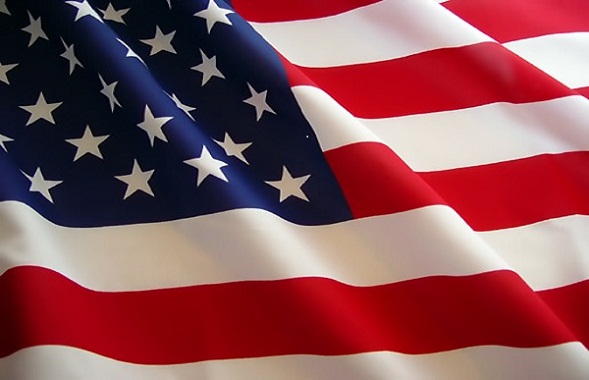With China's announcement that the world needs a new global currency, I feel its time to review a few facts:
FACT: The United States Dollar has lost 50% of its value against foreign currencies since 2001. Since most foreign currencies have also fallen, the actual depreciation of the dollar is much greater.
FACT: The S&P 500 was pushing 1500 in 2001. Today it is at 1271. When the decline of the dollar is factored in, the S&P is really at 640. That means Stock investors, on average, have lost 60% of their investments since 2001.
FACT: Real Estate values are now at their 2001 level. Factoring in the declining dollar, real-estate has lost 60% of its value since 2001.
FACT: Gold was at $270 an ounce in 2001. Today it is at $1361 per ounce. That is a 504% increase.
FACT: Silver was at $4.70 an ounce in 2001. Today it is at $28.50. That is a 606% increase.
Silver as a Store of Value:
"Silver has been used as a medium of exchange since ancient times (see Genesis 23:16). It was not until the reign of Croesus (560-546 B.C.), king of Lydia (in Asia Minor), that silver was stamped as official coinage.
Throughout history, silver coins were, and still are in many places, essential for internal and international trade. The Spanish reales (also containing 0.8 oz.. silver), minted in Mexico and Peru, were used throughout the Americas for generations. And nearly 400 million of the 1780-dated Austrian Maria Theresa thalers (containing 0.8 oz. silver) have been struck over the past two hundred years to serve as trade coins in Europe and Asia.
In 1792, Alexander Hamilton, then the U.S. Secretary of the Treasury, proposed the adoption of a gold and silver based monetary system. Silver remained in circulating U.S. coins until the supply of silver could not meet the demand for coins and the face value of the coin fell below it's bullion, or meltdown value. The U.S. government eliminated silver from quarters and dimes in 1965 and half dollars were reduced to 40%. In the U.S. today, silver is used only in bullion, commemorative and proof coins. Mexico is the only country currently using silver in it's circulating coinage." (Source)
Today, 95% of the silver is being used for industrial, jewelry, and photographic uses.
Medical Applications:
"Since 1884 when the German obstetrician Carl Crede administered a 1% silver nitrate solution to the eyes of newborn infants, virtually eliminating the incidence of gonococcal opthalmia (a disease causing blindness in newborns), silver has been used as an important bactericide. Only in recent times have modern antibiotics replaced such treatment.
Recent research shows that silver also promotes the production of new cells, increasing the rate of healing in wounds and bone. The regeneration of whole areas of lost skin is being accomplished by the use of silver treatment.
Research indicates that silver-based purification systems are effective in disinfecting water. For the home, silver-based water purifiers are becoming increasingly common. Here silver is used to prevent the buildup of bacteria and algae in the filters. Research has also shown that the catalytic action of silver, in concert with oxygen, provides a powerful sanitizer, virtually eliminating the need for chlorine in swimming pools. Polyvalent silver oxide, a highly charged silver, is finding wide application in the treatment of bacterial and viral disease.
William Conrad Roentgen, who discovered of x-rays in 1895, also discovered that the invisible rays served to activate silver halide crystals, a process that revolutionized medical diagnosis.
One out of every seven pairs of prescription eyeglasses sold in the U.S. incorporates silver. Silver halide crystals melted into glass can change the light transmission from 96% to 22% in less than 60 seconds and block at least 97% of the sun's ultraviolet rays. The change is endlessly reversible.
As part of a growing trend in silver-based bandage usage, two wound dressing makers, Curad and Johnson & Johnson, have recently introduced products into this growing field. Beiersdorf USA, maker of Curad bandages, is marketing a line of wound-care products using silver as a natural antibacterial: Curad Silver. The new line uses silver in the wound pad to help protect minor cuts, scrapes, abrasions, lacerations and scalds. Curad Silver Natural Antibacterial Bandages are available as Assorted Bandages, Extra Large Bandages and Active Gel Bandages which promise multi-day holding ability.
For the health care professional market, Johnson & Johnson has introduced their SILVERCEL antimicrobial alginate dressing, providing the protection of silver and the absorption of alginate. Alginate dressings are highly absorbent, biodegradable dressings made from seaweed. They keep wounds moist, which not only promotes healing but limits damage during dressing changes. According to company officials, SILVERCEL can be especially helpful in the healing of chronic, hard-to-heal wounds that may be infected as a result of a high bacterial count. Because of a sustained release of silver ions, the dressing acts as an effective barrier and may help reduce infection.

No comments :
Post a Comment